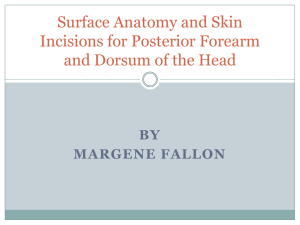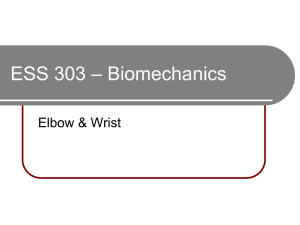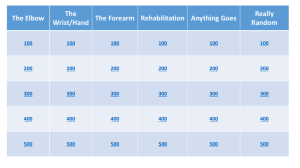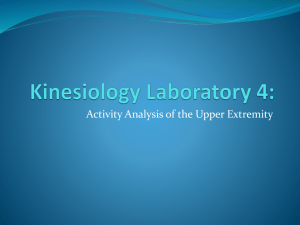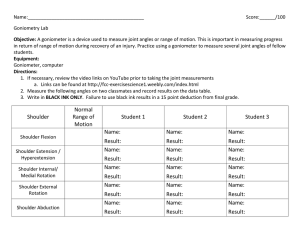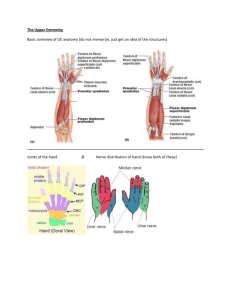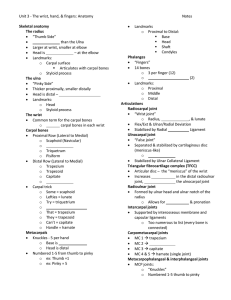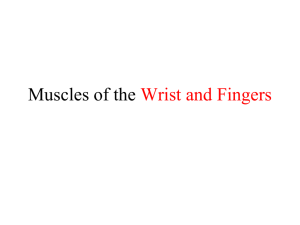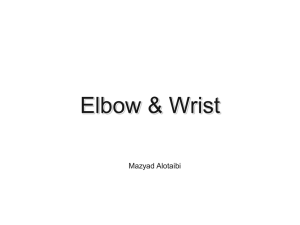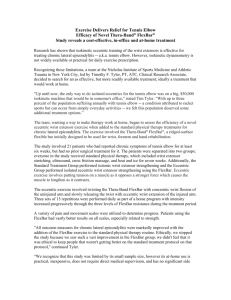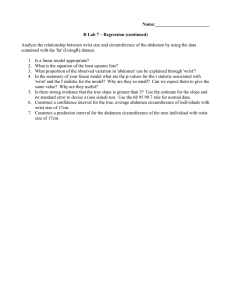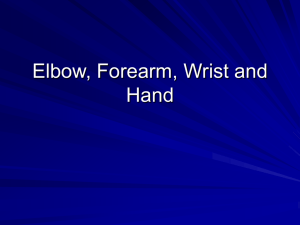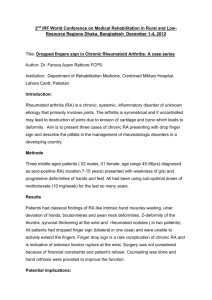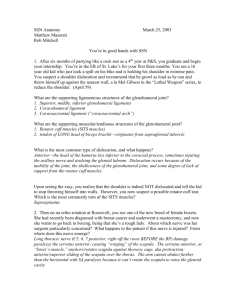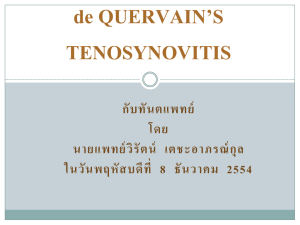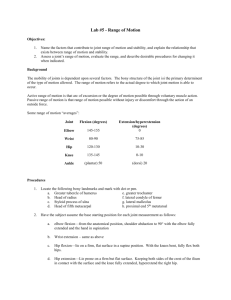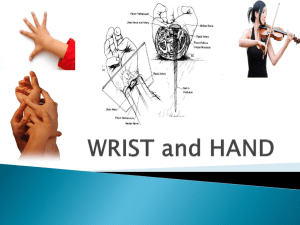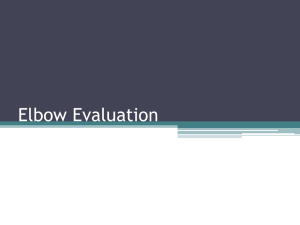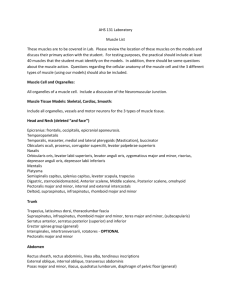Neurological Screening
advertisement
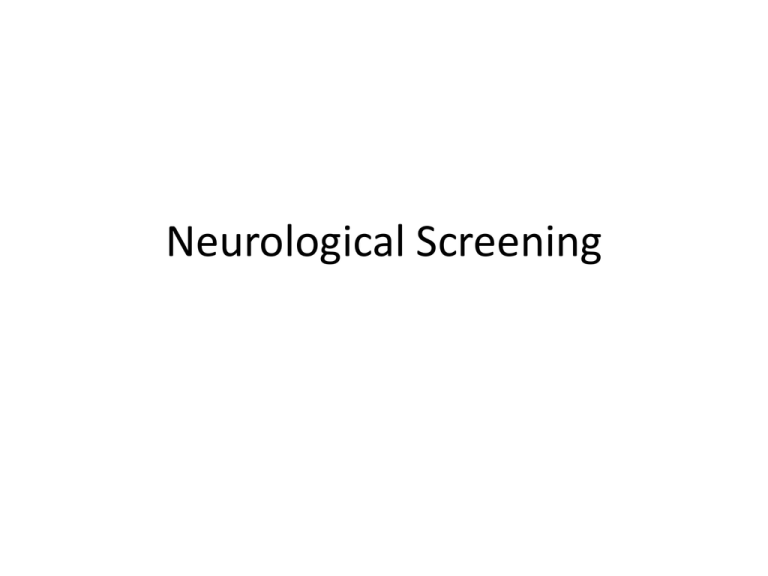
Neurological Screening Sample Question for Examining Orientation and Awareness • Person – What is your name? – How old are you? – When were you born? • Place – Do you know where you are right know? – What kind of place is this? – What city or town do you live in? • Time – What is today’s date? – What day of the week is it? – What year is it? • Circumstance – Do you know why you are here? http://www.maturespine.com/symptoms/weakness.html Upper Quarter Myotomes Level Action to Be Tested Muscle C5 Shoulder shrug Deltoid C5, C6 Elbow flexion Biceps C6,C7 Wrist extension Wrist extensors C7 Elbow extension, wrist flexion Triceps, wrist flexors C8 Thumb extension Abductor pollicis longus, extensor pollicis longus, extensor pollicis brevis T1 Digit abduction/adduction Interossei Lower Quarter Myotomes Level Action to Be Tested Muscle L2, L3 Hip flexion Iliopsoas L3 Knee extension Quadriceps L4 Dorsiflexion Anterior Tibialis L5 Great toe extension Extensor hallicus longus S1 Plantarflexion Gastronemius S2 Knee flexion Hamstrings Proprioception Upper Extremity Lower Extremity Shoulder Hip Elbow Knee Wrist Ankle Distal phalanx of thumb Distal phalanx of great toe Deep Tendon Reflexes Upper quarter: Lower quarter: Root Level Muscle CN V Muscle of mastication C1-4 Upper trapezius, levator scapula, deltoid C5-6 Biceps C5-6 Brachioradialis C7 Triceps C8, T1 Hypothenar L3-4 Quadriceps S1 Gastrnemius 0=absent; 1=hyporeflexia; 2=normal; 3=hyperreflexia; 4=clonus Babinski http://meded.ucsd.edu/clinical med/neuro3.htm http://academic.scranton.edu/faculty/kosmahle 1/courses/pt351/lab351/babinski.htm Test positive with splaying of the toes and extension of the great toe. Cranial Nerve Integrity Cranial Nerve Function CN II, optic radiation, visual cortex Visual field CN II Visual acuity CN III Pupillary reflex CN III, IV, VI Extraocular movements CN V, VII Facial sensation CN VIII Labyrinthine/Auditory CN IX Swallow CN X Voice—if deficit may be characterized by hoarseness CN XI Shoulder shrug CN XII Tongue NOTE: Ocular motility disturbances may be present with brainstem strokes, such as diplopia, oscillopsia, visual distortions, or paralysis of conjugate gaze. O'Sullivan S, Schmitz T. Physical Rehabilitation. 5th ed2007.

